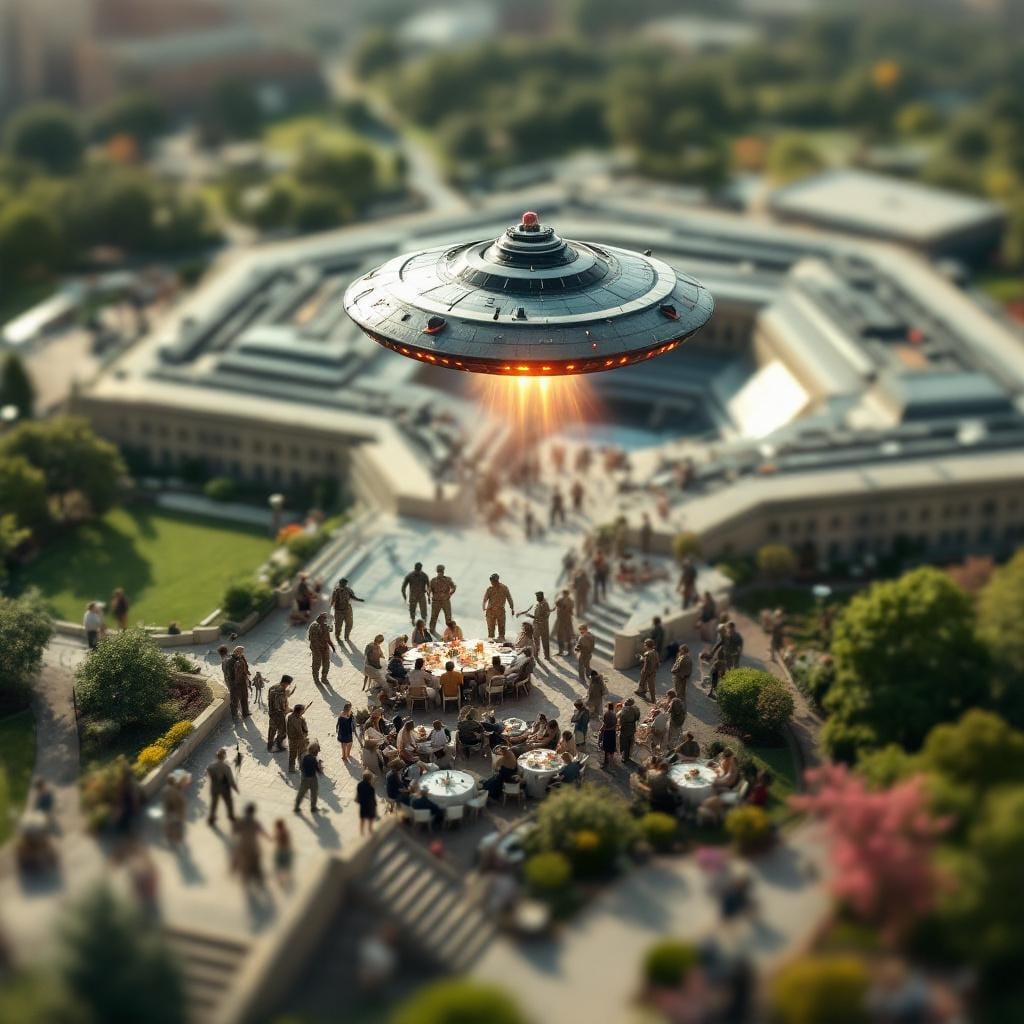The Pentagon's UFO Deception: How the Military Created and Spread False Extraterrestrial Stories
For decades, mysterious lights in the sky and unexplained aerial phenomena have captivated the public imagination, sparking countless theories about extraterrestrial visitors. But a growing body of evidence reveals a startling truth: many of these UFO stories were deliberately manufactured by the U.S. military as part of elaborate disinformation campaigns designed to hide classified aircraft testing and protect national security secrets.
The Birth of Government UFO Disinformation
The modern UFO disinformation era began in earnest during the Cold War, when the U.S. military found itself in a predicament. Advanced aircraft testing at classified facilities like Area 51 in Nevada was generating numerous UFO reports from civilians and pilots who witnessed strange, high-speed objects performing impossible maneuvers.
Rather than risk exposing top-secret programs like the U-2 spy plane development, military officials made a calculated decision: it was better to let people believe they were seeing alien spacecraft than to reveal cutting-edge military technology that could give enemies strategic advantages.
Case Study: The Roswell Incident Reimagined
The infamous 1947 Roswell incident exemplifies this strategy. While conspiracy theorists have long claimed the military covered up an alien crash, declassified documents suggest the opposite occurred. The debris was likely from a classified military balloon program designed to detect Soviet nuclear tests. When public interest peaked, rather than simply denying the incident, some officials may have subtly encouraged the more sensational extraterrestrial explanations to deflect attention from the actual classified program.
Documented Disinformation Programs
Project Blue Book and Beyond
From 1952 to 1969, the Air Force's Project Blue Book investigated UFO reports, officially concluding that most had conventional explanations. However, internal documents later revealed that the program served a dual purpose: while genuinely investigating some phenomena, it also helped manage public perception and provided cover for ongoing classified aircraft development.
The Paul Bennewitz Case
One of the most documented cases of deliberate UFO disinformation involved Paul Bennewitz, an electronics entrepreneur who began monitoring strange signals and lights near Kirtland Air Force Base in New Mexico during the 1980s. Rather than simply asking him to stop, Air Force personnel fed Bennewitz increasingly elaborate stories about underground alien bases and secret government-alien treaties. The disinformation campaign successfully diverted his attention from actual classified military activities while simultaneously discrediting him in the eyes of serious researchers.
Modern Revelations and Official Admissions
Recent years have brought unprecedented transparency about these historical deception campaigns. In 2020, the Pentagon officially released three videos showing "unidentified aerial phenomena" (UAP), marking a significant shift in official discourse. However, this transparency has also revealed how past disinformation campaigns worked.
Former military officials have begun speaking openly about these programs. In interviews and declassified documents, they acknowledge that creating and spreading UFO stories was sometimes considered preferable to revealing military secrets that could compromise national security.
The Technology Behind the Myths
Many UFO sightings from the 1950s through 1980s can now be traced to testing of revolutionary aircraft that seemed impossible at the time:
- U-2 Spy Planes: Flying at unprecedented altitudes, these aircraft appeared as mysterious bright objects to observers below
- SR-71 Blackbird: Capable of speeds exceeding Mach 3, this aircraft created sonic booms and visual effects that seemed otherworldly
- Stealth Technology: Early stealth aircraft prototypes had unusual angular shapes that looked unlike any conventional aircraft
The Cost of Deception
While these disinformation campaigns served their intended military purposes, they had unintended consequences. They helped create a thriving UFO subculture, spawned countless conspiracy theories, and may have discouraged legitimate scientific investigation of unexplained aerial phenomena for decades.
The campaigns also demonstrate how government agencies can successfully manipulate public perception and media narratives when deemed necessary for national security—a capability that raises important questions about transparency and democratic accountability.
Conclusion
The revelation that the U.S. military deliberately created and spread false UFO stories represents a fascinating intersection of military strategy, public psychology, and information warfare. While these deception campaigns achieved their immediate goals of protecting classified programs, they also created lasting cultural phenomena and conspiracy theories that persist today.
As military officials become more transparent about historical UAP incidents, the public gains valuable insight into both the reality of unexplained aerial phenomena and the lengths to which governments will go to protect sensitive information. The truth, it turns out, may be stranger than fiction—just not in the way many UFO believers expected.
